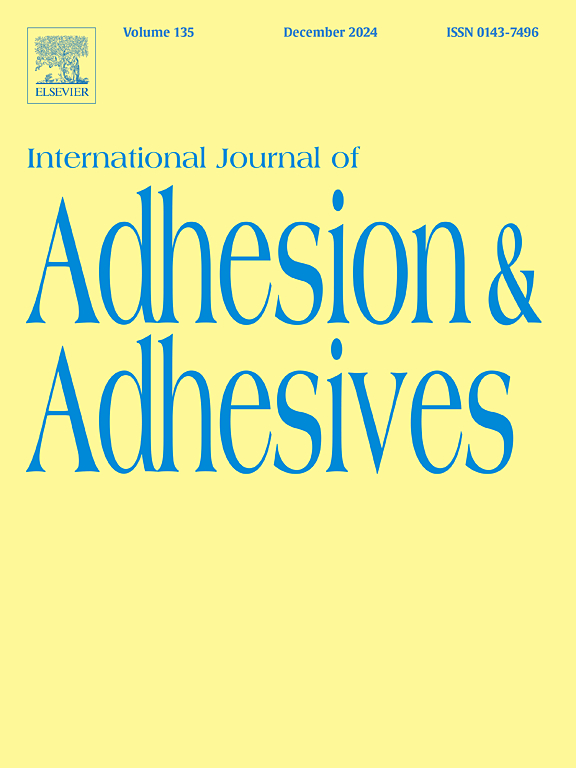CFRP粘合的激光处理设计:一种减少加工时间的创新方法
IF 3.2
3区 材料科学
Q2 ENGINEERING, CHEMICAL
International Journal of Adhesion and Adhesives
Pub Date : 2025-06-06
DOI:10.1016/j.ijadhadh.2025.104075
引用次数: 0
摘要
一般来说,复杂形状或大尺寸的纤维增强聚合物结构件的生产是难以实现的。因此,最好生产更简单的部件,这些部件通常通过紧固系统或用结构粘合剂粘合来组装。在后一种情况下,聚合物复合材料应在粘合前进行预处理,以获得可靠的结构。为此,激光系统可以代表一种可重复的、非常有吸引力的预处理聚合物复合材料的解决方案。然而,通常实现预处理所需的时间可能导致制造商选择其他技术。本文提出了一种新型的激光织构设计方法。基于只对承受较高应力值的界面进行预处理的假设,它可以减少加工时间。实际上,所开发的方法允许将预处理过程设计为关节所受应力场的函数。实验结果表明,与未经处理的对照相比,经过充分处理的试件的抗剪强度增加了63%,优化处理在标准化处理面积为0.4时产生了等效性能。数值预测结果与实验结果非常吻合,误差仅为3%比4%,验证了模型的准确性。此外,治疗时间减少了约60%,而关节强度没有明显下降。该方法可用于复杂的接头几何形状,提高了激光预处理CFRP粘合的效率和可行性。本文章由计算机程序翻译,如有差异,请以英文原文为准。
Laser treatment design for CFRP bonding: an innovative approach to reduce process time
Generally, the production of structural parts in fiber-reinforced polymer with complex shape or big dimensions can be difficult to achieve. Therefore, it could be preferable to produce simpler parts, which are often assembled through fastening systems or bonding with structural adhesives. In the latter case, polymer composites should be pretreated before bonding to obtain a reliable structure. For this, laser systems can represent a repeatable and very attractive solution for pretreating polymer composites. However, often the time required for realizing the pre-treatment could lead to the choice of other technologies by the manufacturer. In this article, an innovative approach to design the laser texturing for bonding CFRP is presented. Based on the assumption that only the interfaces subjected to higher stress values should be pretreated, it allows a reduction in process time. In fact, the developed method allows to design the pretreatment process as a function of the stress field on which the joint is subjected. Experimental results demonstrate a 63 % increase in shear strength for fully treated specimens compared to untreated controls, with optimized treatment yielding equivalent performance at a normalized treated area of 0.4. Numerical predictions showed strong agreement with experimental results, with a discrepancy of only 3 ÷ 4 %, validating the model's accuracy. Additionally, the treatment time was reduced by approximately 60 % without a significant loss in joint strength. This approach, transferable to complex joint geometries, enhances the efficiency and viability of laser pretreatment for CFRP bonding.
求助全文
通过发布文献求助,成功后即可免费获取论文全文。
去求助
来源期刊

International Journal of Adhesion and Adhesives
工程技术-材料科学:综合
CiteScore
6.90
自引率
8.80%
发文量
200
审稿时长
8.3 months
期刊介绍:
The International Journal of Adhesion and Adhesives draws together the many aspects of the science and technology of adhesive materials, from fundamental research and development work to industrial applications. Subject areas covered include: interfacial interactions, surface chemistry, methods of testing, accumulation of test data on physical and mechanical properties, environmental effects, new adhesive materials, sealants, design of bonded joints, and manufacturing technology.
 求助内容:
求助内容: 应助结果提醒方式:
应助结果提醒方式:


